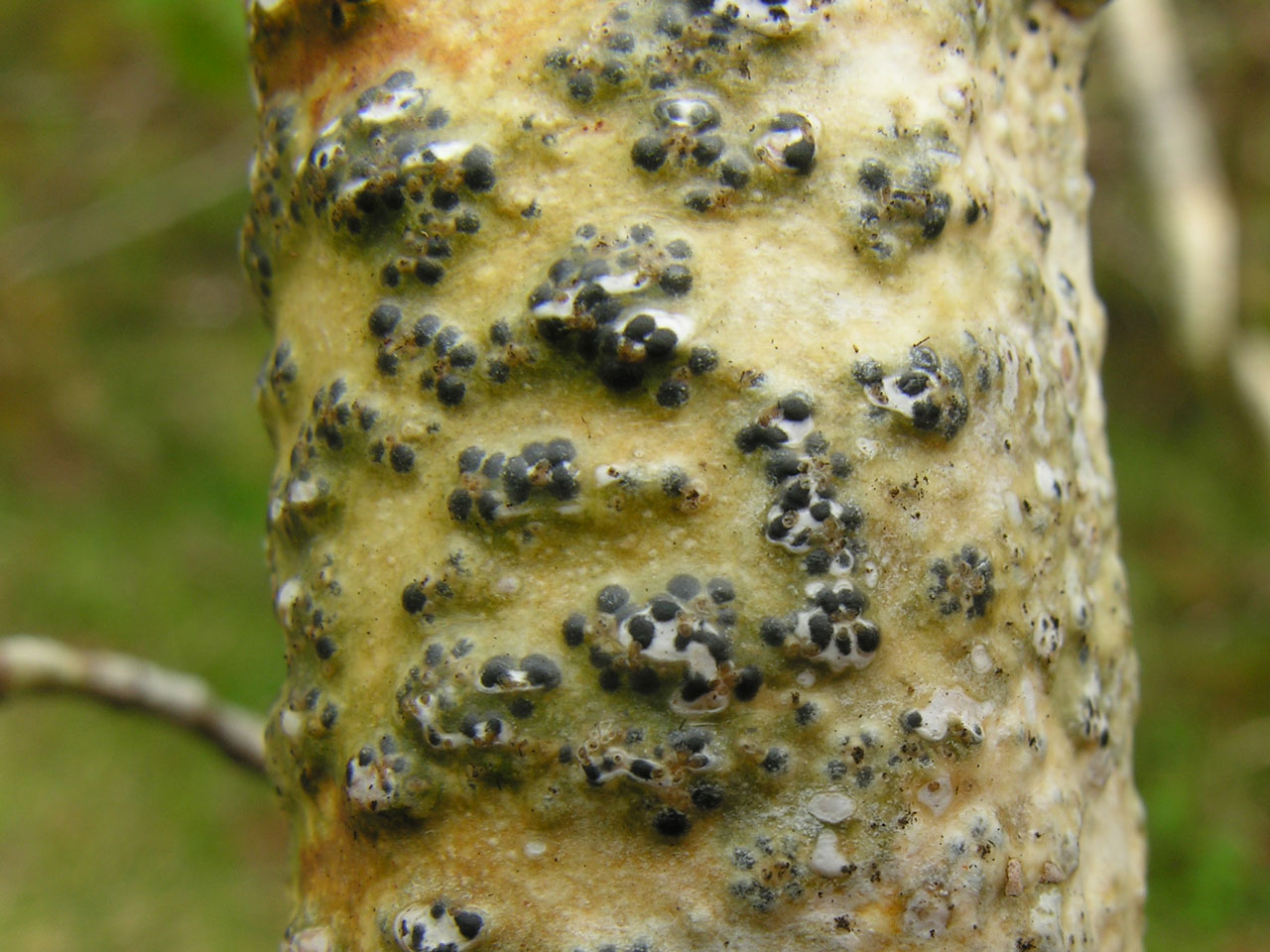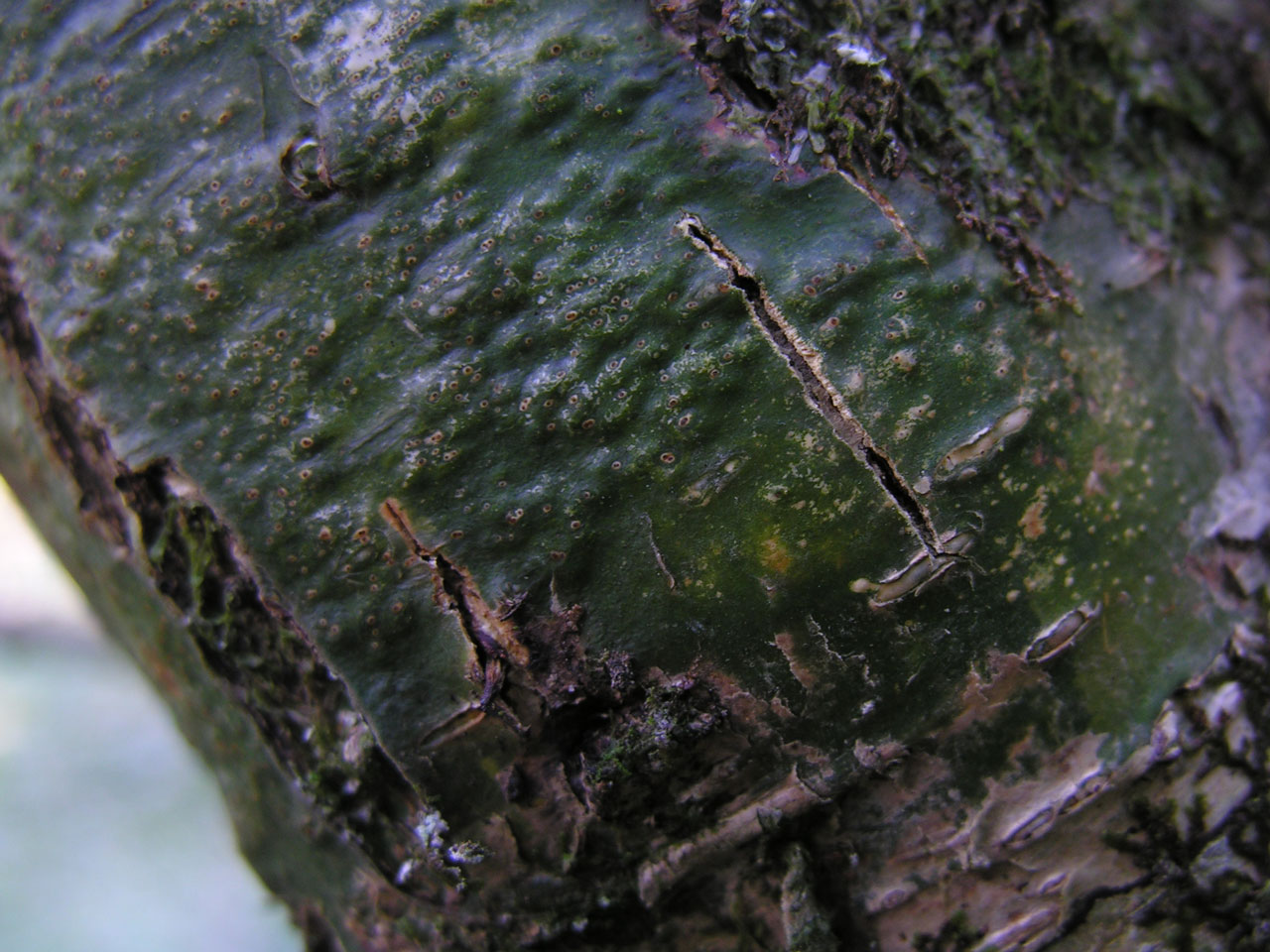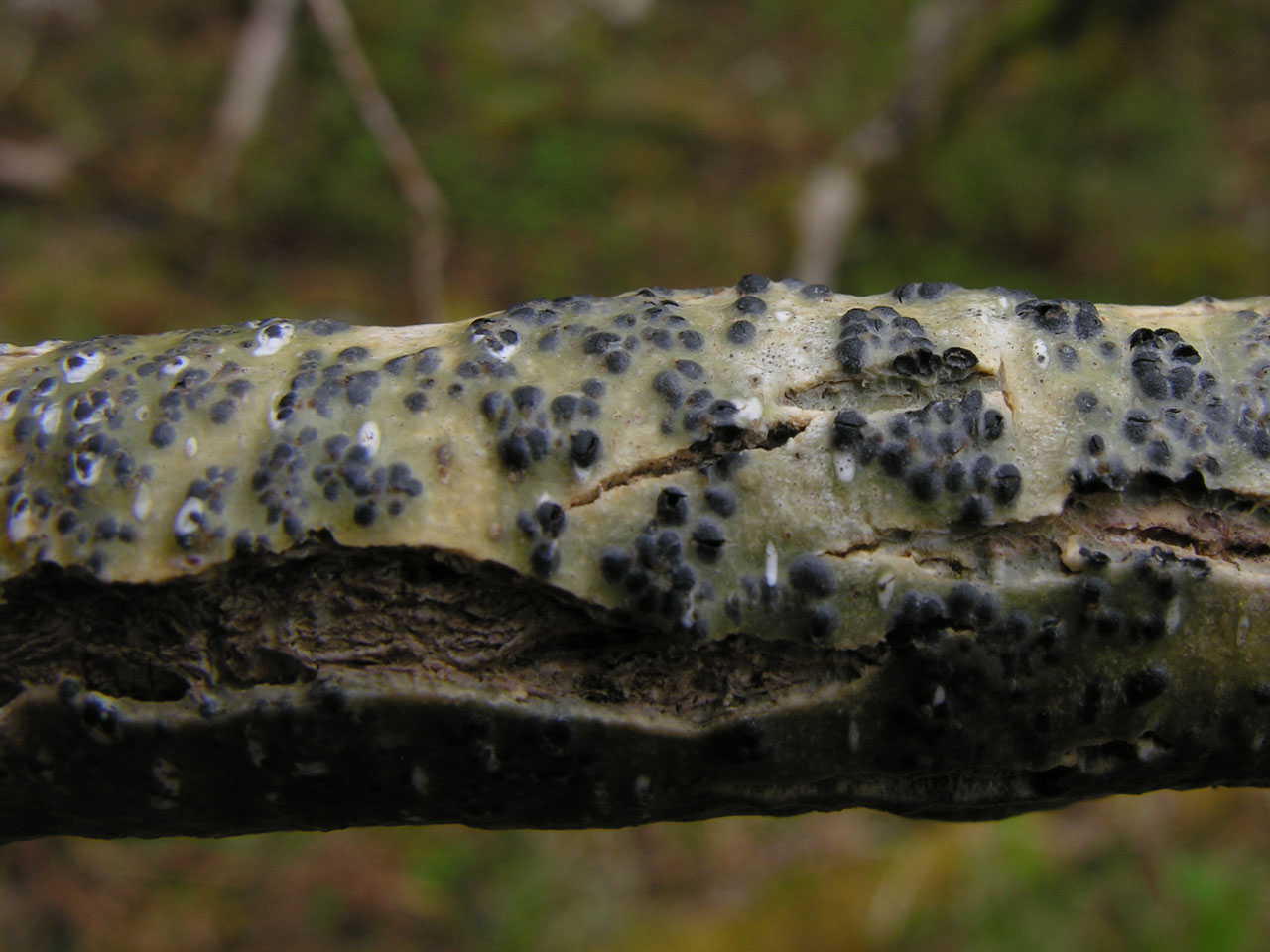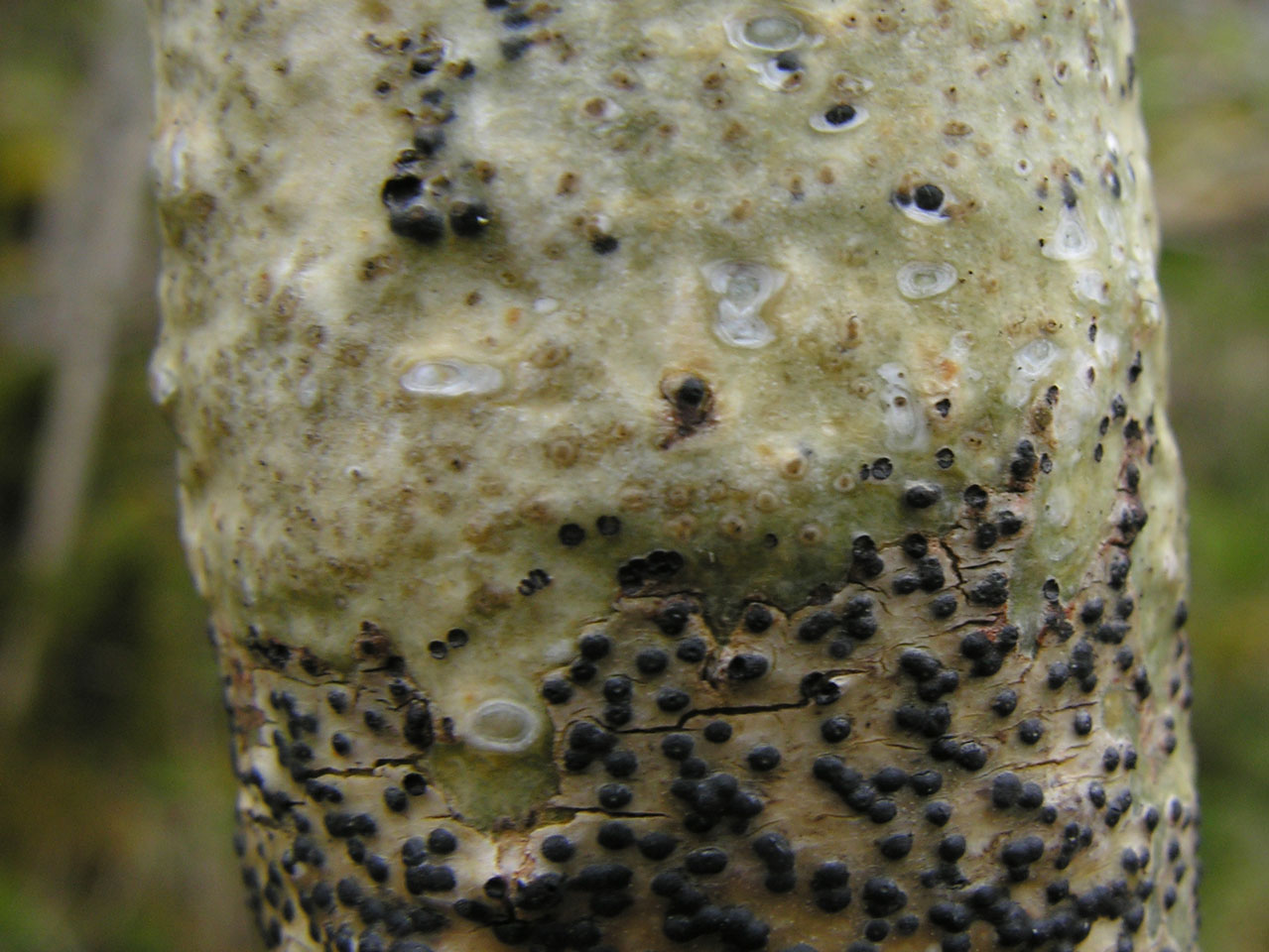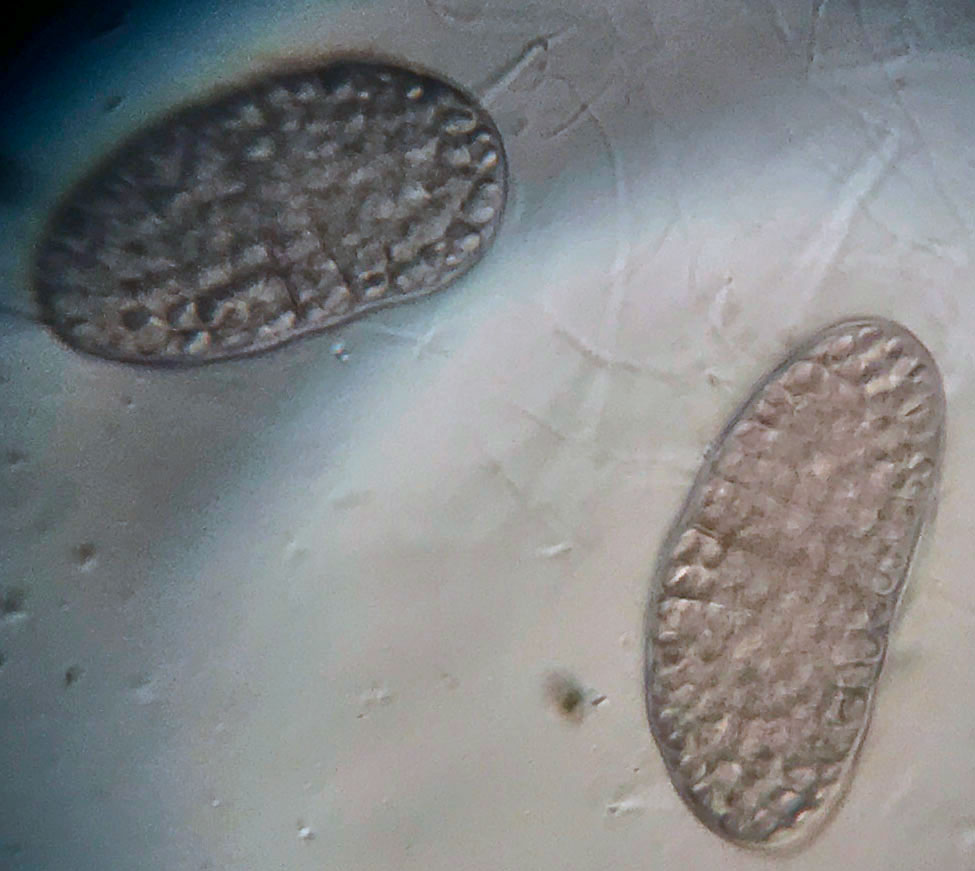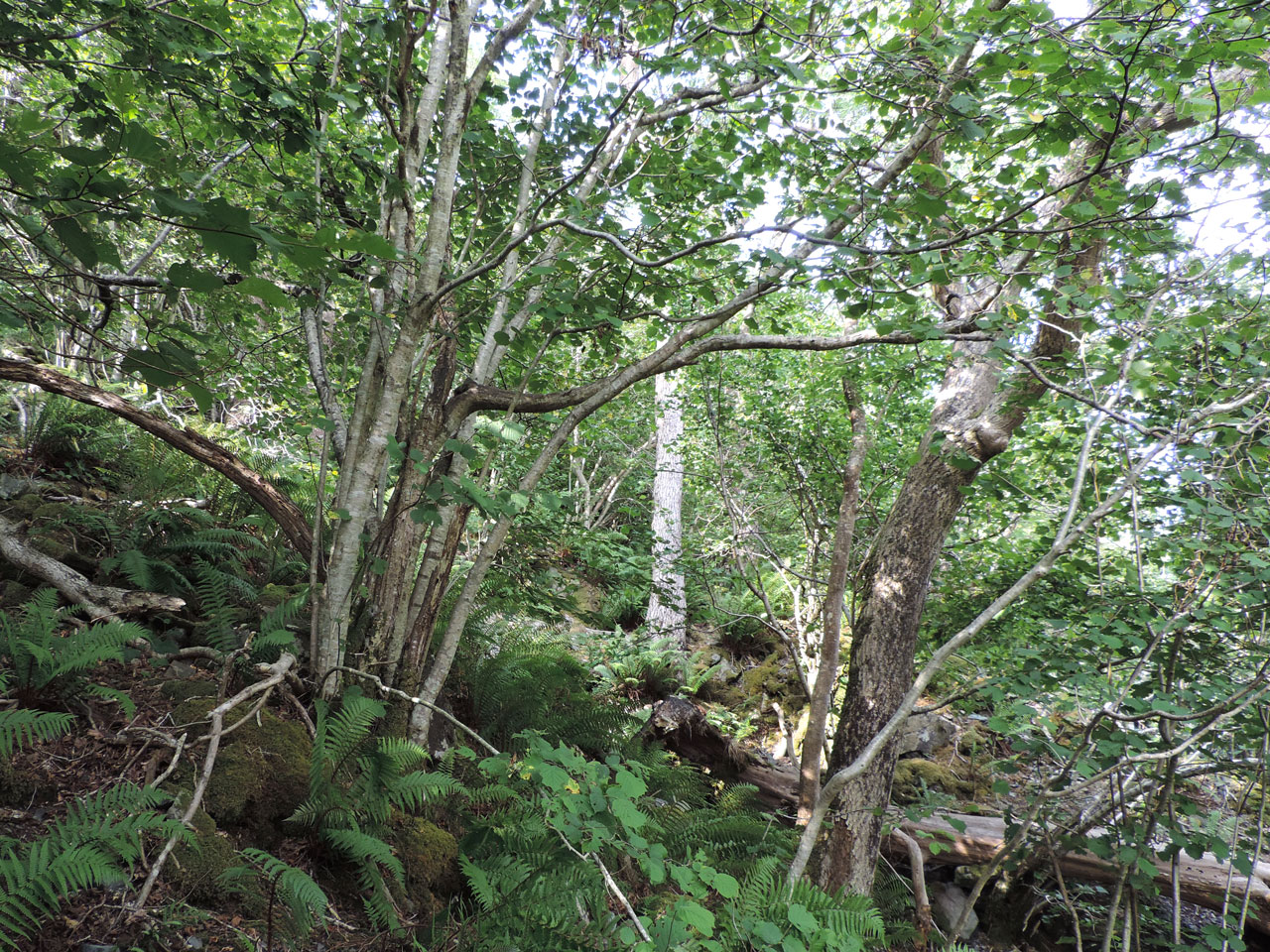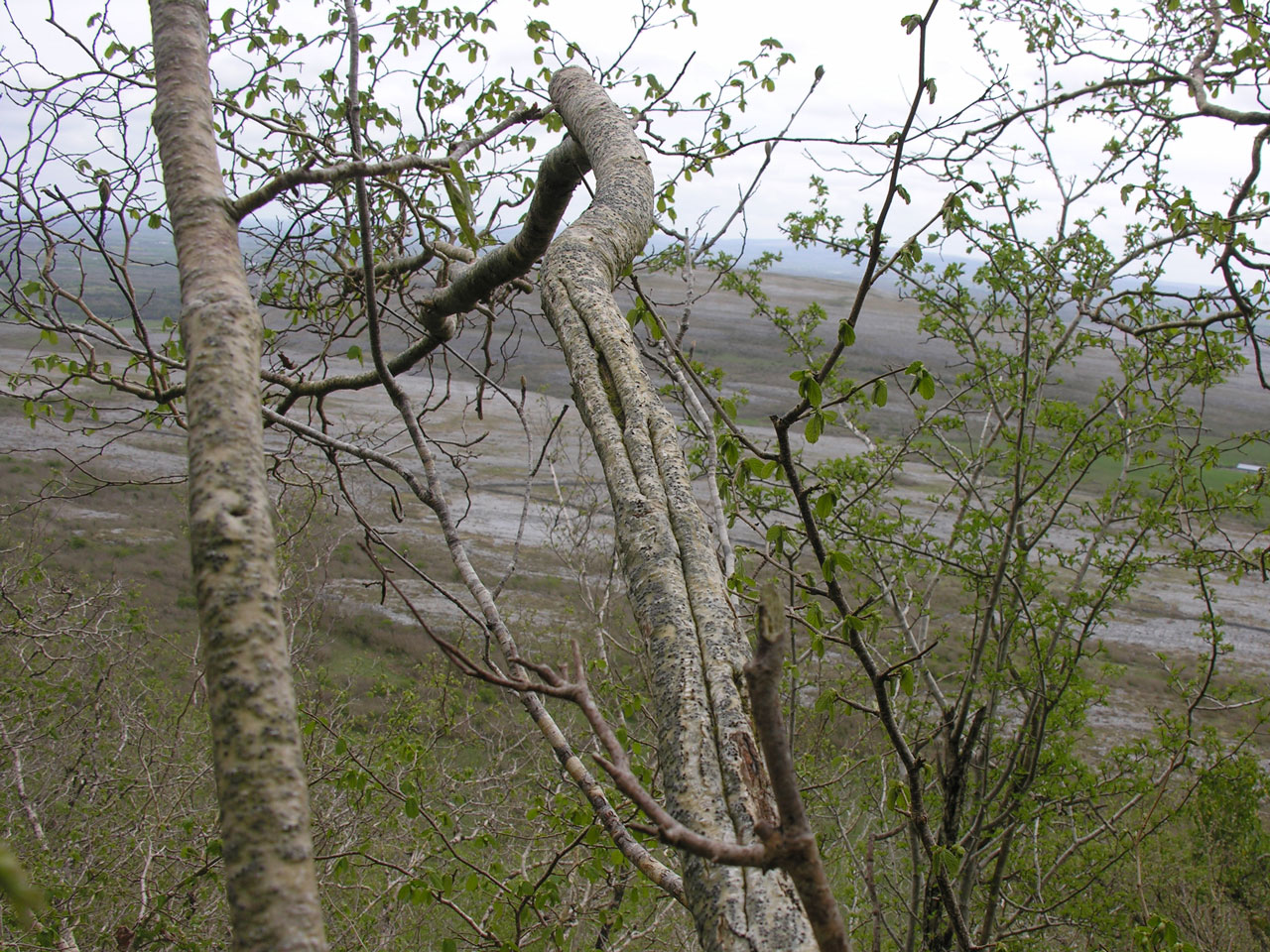A very special and distinctive Pyrenula with the clustered perithecia developing immersed in the thick immersed thallus, with only the pale ostiole visible at surface, however, the presence of the perithecia results in a lumpy thallus. In older material the perithecia can be exposed (giving rise to the nickname Blackberries in Custard). The thallus is yellow-buff when well lit, ranging to dark olive-green in the shade, and the ascospores are muriform. A very rare species of temperate rainforest found in a few very sheltered, moist woods, often in ravines but also on more open slopes, especially in Ireland. Pyrenula dermatodes also has sunken perithecia, but the perithecia are arranged signally and the UV fluorescence is much brighter.
Thallus immersed, pale olive-green or yellow-buff, dark olive-green in the shade, sometimes with white dots (pseudocyphellae), smooth, continuous; with age becoming rougher and rarely cracked. Perithecia 1–1.2 mm diam., black, arising 1–1.5 mm below the surface; only the pale ostiole visible at surface, or perithecia visible through the translucent surface of the thallus; occurring singly, or radially arranged in groups of 2 to 5; ostioles lateral, often joined, visible as a pale yellow- or orange-brown depression, or level with the thallus surface. Asci 4- to 8-spored. Ascospores muriform, brown when mature, (57–) 70–135 (–140) × (24–) 26–47 (–55) μm, cylindrical to fusiform-ellipsoidal. Pycnidia ca 2 mm diam., divided into chambers; conidia 24–27 × ca 1 μm. Thallus C–, K–, KC– , Pd–, UV+ pale yellow (lichen products not tested by TLC).
Distinguished by the large, immersed perithecia arranged in groups, with lateral ostioles and the muriform ascospores. The perithecia are very striking when visible through the upper layers of the thallus, but sometimes they are very inconspicuous, detectable in surface view only by the pale ostioles. Pyrenula dermatodes also has sunken perithecia, but the perithecia are arranged signally and the UV fluorescence is much brighter.
On smooth bark, typically on Hazel but also on Sycamore, Ash, Holly and Rowan in very sheltered, moist woods, often in ravines but also on more open slopes, especially in Ireland. An unusual feature of this species is that the thick immersed thallus, once it spreads around Hazel stems, constricts the expansion of the Hazel bark to the extent that the bark often spilts longitudinally.

Very rare. N.W. Wales (Merioneth), Cumbria, W. Scotland (Westerness, Loch Sunart, Mull, Argyll), S.W. Ireland (Kerry, Killarney, Clare). There is potential for finding more sites in remote Scottish ravines.
A very rare species of highly oceanic woods in Britain found in five locations in ravines in the temperate rainforests of western Scotland, a more open Hazel pasture woodland in Borrowdale, Cumbria and the Ceunant Llennyrch ravine in Meirionnydd, Wales. Strongly localised in Ireland, but very locally frequent in Hazel stands in the mountains of south west Munster, however, Hazel stands are rather rare in the mainly acidic woodlands here. Also in a few Hazel woods in the Burren, Co Clare, but confined to isolated ancient Hazel stands here. Most stands are not immediately threatened but the Welsh site is suffering form increasing shade from the impact of under grazing.
Britain: Vulnerable International Responsibility Species
Scotland: Priority Taxon for Biodiversity in Scotland
Wales: Critically Endangered, Section 7 species link
Cannon, P., Coppins, B., Aptroot, A., Sanderson, A. & Simkin, J. (2023). Perithecial genera I, including Acrocordia, Alloarthopyrenia, Anisomeridium, Antennulariella, Arthopyrenia, Celothelium, Cyrtidula, Dichoporis, Eopyrenula, Julella, Leptorhaphis, Leptosillia, Lithothelium, Mycomicrothelia, Mycoporum, Naetrocymbe, Pyrenula, Rhaphidicyrtis, Sarcopyrenia, Swinscowia and Tomasellia. Revisions of British and Irish Lichens 37: 1-59.
Text by Neil A Sanderson


